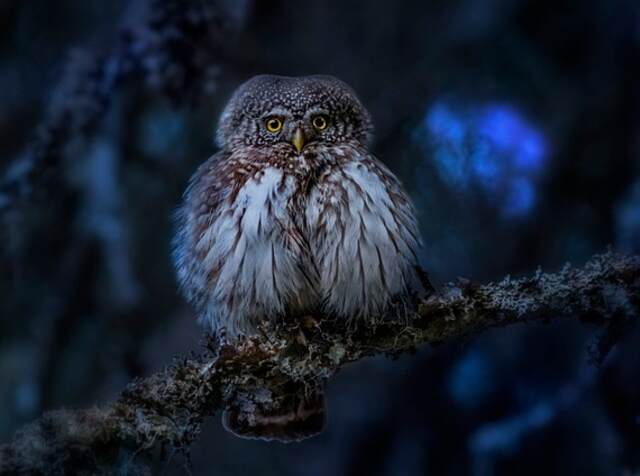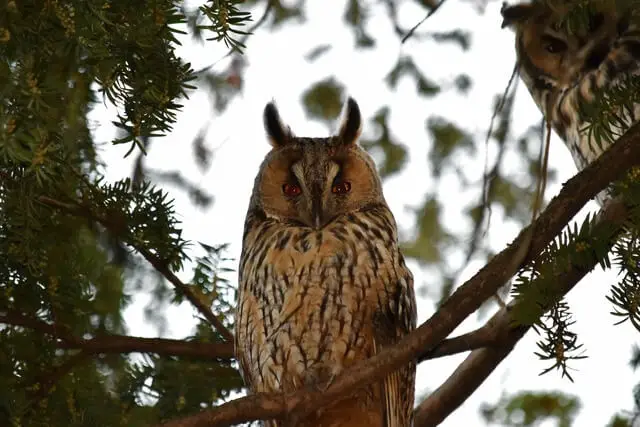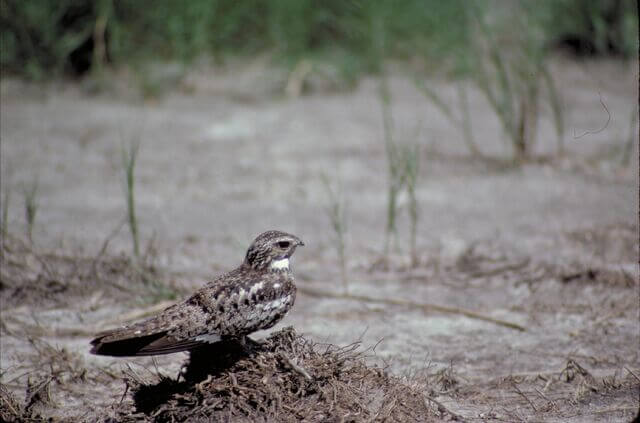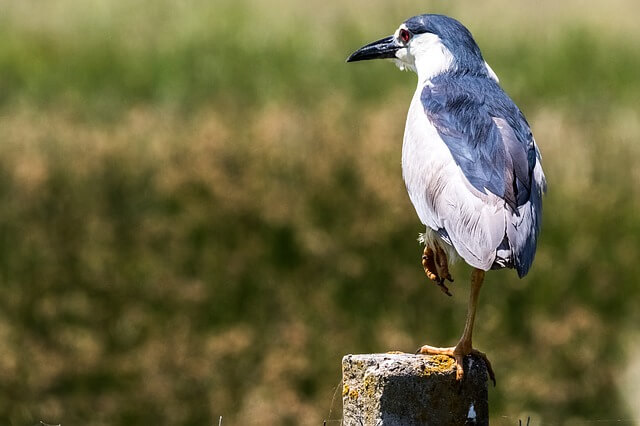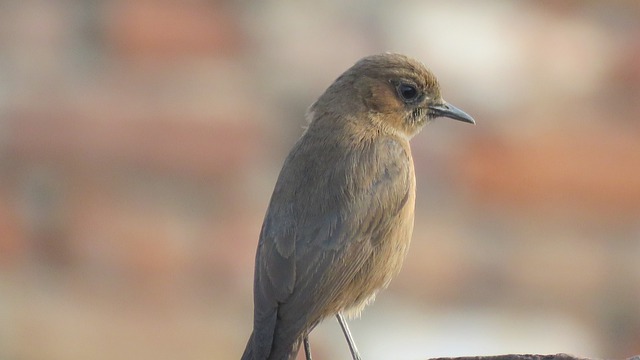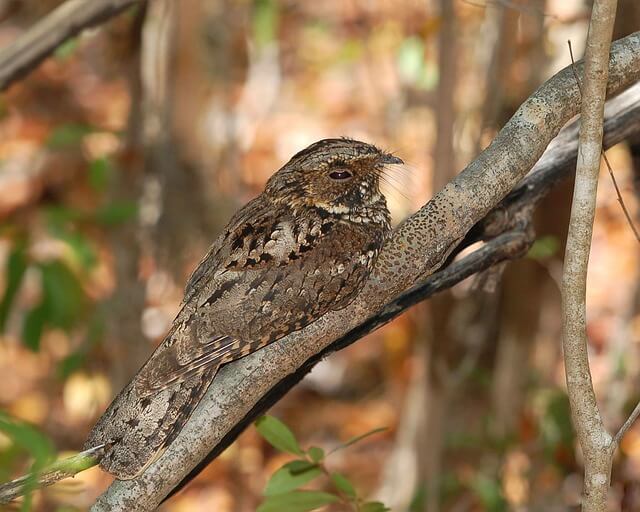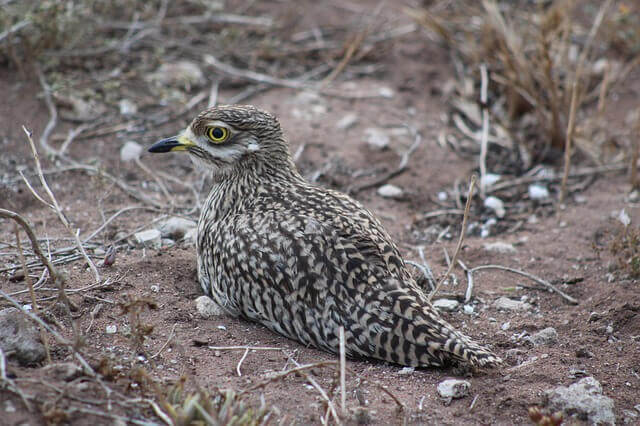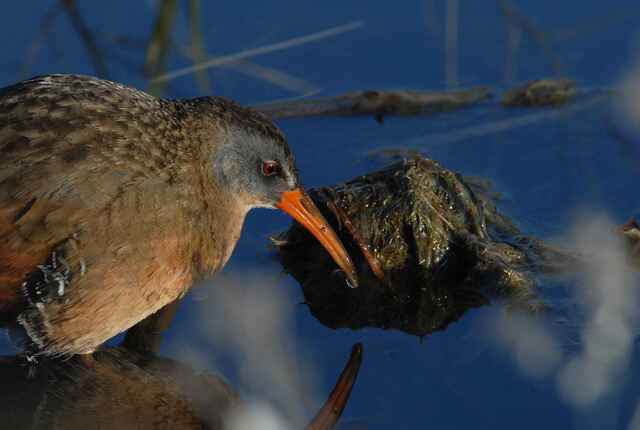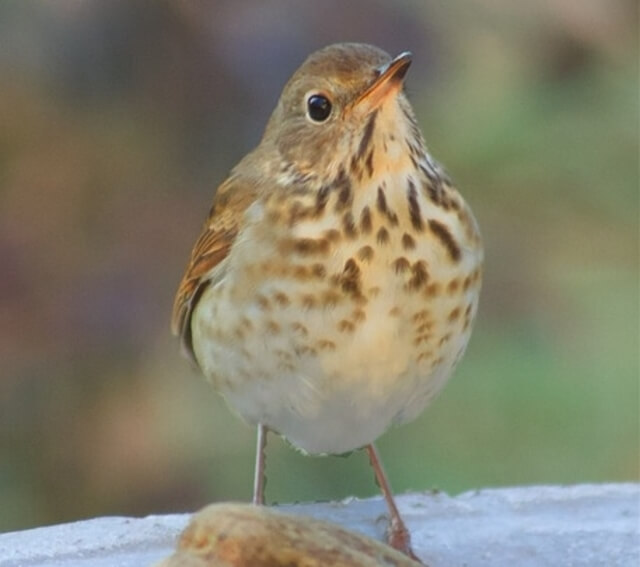Are you curious about what birds are active at night? If so, welcome to the fascinating world of nocturnal birds! As an avid bird enthusiast who has spent countless hours studying and observing these amazing creatures, I can assure you that there’s nothing quite like the thrill of nighttime birding.
In this comprehensive guide, we’ll explore the science behind nocturnal bird behavior and introduce you to some of the most interesting and elusive species that are active after dark. So, buckle up and get ready to discover a whole new world of feathered friends!
Table of Contents
- 1 The Fascinating World of Nocturnal Birds
- 2 The Science Behind Nocturnal Bird Behavior
- 3 What Birds Are Active At Night?
- 3.1 Owls: The Ultimate Nocturnal Predators
- 3.2 Tawny Frogmouth: The Master of Camouflage
- 3.3 Common Nighthawk: The Acrobatic Night Flier
- 3.4 Black-crowned Night-heron: The Wetland Specialist
- 3.5 Common Nightingale: The Iconic Songster of the Night
- 3.6 Nightjar: The Mysterious Birds of the Night
- 3.7 Stone Curlew: The Desert Nomad
- 3.8 Yellow-breasted Chat: The Nocturnal Warbler
- 3.9 Kiwi Bird: The Flightless Icon of New Zealand
- 3.10 Eastern Whip-poor-will: The Elusive Nightjar of North America
- 3.11 European Robin: The Charming Bird of Winter Nights
- 3.12 Virginia Rail: The Stealthy Marsh Dweller
- 3.13 Hermit Thrush: The Melodic Songster of the Forest
- 3.14 American Robin: The Early Bird Gets the Worm
- 4 Conclusion
- 5 Author
The Fascinating World of Nocturnal Birds
The world of nocturnal birds is a fascinating and mysterious one. These creatures have adapted in incredible ways to thrive in the darkness, from their unique vision and hearing abilities to their specialized hunting techniques.
Exploring this world can be a thrilling experience, as you never know what kind of feathered friend you might encounter on a moonlit night. Whether you’re a seasoned birder or new to the hobby, delving into the world of nocturnal birds is sure to be an exciting and rewarding adventure.
The Allure of Nighttime Birding
There’s just something about being out in the darkness with nothing but the sound of crickets and the occasional hoot of an owl to keep you company. And when you finally spot a nocturnal bird, it’s like finding a hidden treasure.
The Challenge of Identifying Birds in the Dark
Of course, identifying these birds can be a bit of a challenge. With the limited visibility, you really have to rely on your other senses, like listening for their distinctive calls or trying to make out their silhouette against the night sky. However, after mastering it, the results can be incredibly fulfilling.
The Importance of Understanding Nocturnal Bird Behavior
But beyond just the excitement of spotting these elusive creatures, understanding nocturnal bird behavior is also incredibly important. These birds play a critical role in our ecosystem, and studying their behavior can help us better understand how to protect them and their habitats.
So if you’re ready to dive into the world of nocturnal birding, get ready for an adventure like no other. From owls and nightjars to herons and thrushes, there’s a whole world of nocturnal birds just waiting to be explored. Let’s get started with your binoculars in hand!
The Science Behind Nocturnal Bird Behavior
Birds have some incredible adaptations that allow them to see in low light conditions. The physiology of bird vision in low light conditions includes having more rods than cones in their eyes, which makes them more sensitive to light.
Additionally, they have a reflective layer behind their retina that helps to amplify any available light. This allows them to navigate their environment even in the dark.
Advantages and Disadvantages of Being Active at Night
Being active at night has its advantages and disadvantages for birds. For one, there’s less competition for resources and fewer predators to worry about. However, there are also some downsides. For example, it can be harder to find food in the dark. Plus, there’s always the risk of colliding with something while flying.
The Role of Circadian Rhythms in Regulating Bird Behavior
Like humans, birds have an internal clock called circadian rhythms that regulate their behavior. This internal clock helps them anticipate changes in the environment, such as the onset of dawn or dusk, and adjust their behavior accordingly. It also helps them to maintain a consistent sleep-wake cycle, even when exposed to artificial light at night.
What Birds Are Active At Night?
Owls: The Ultimate Nocturnal Predators
Owls are fascinating creatures that have evolved to be the ultimate nocturnal predators. There are over 200 species of owls, each with unique adaptations to hunting in the dark. They have excellent night vision, acute hearing, and silent flight, making them virtually undetectable to their prey.
Owl calls are also an important tool for identifying species. Each owl species has a distinctive call, which can be used to distinguish between them. This is particularly useful for researchers studying owl populations and for birdwatchers trying to spot specific species.
Owls also play an important ecological role in controlling nocturnal prey populations. By preying on rodents, insects, and other animals at night, they help to maintain the balance of these populations and prevent overgrowth.
Read more: 17 Fun Facts About Owls in 2023: That Might Surprise You!
Here’s a small table to give you a taste of the diversity of owl species and their unique adaptations:
| Adaptation | Description |
|---|---|
| Nocturnal vision | Owls have large eyes with many rod cells, allowing them to see in low-light conditions and hunt effectively at night |
| Silent flight | Owls have specially adapted feathers that allow them to fly silently, which helps them sneak up on prey without being detected |
| Excellent hearing | Owls have asymmetrical ear placement and large ear openings, which allows them to locate prey using sound alone |
| Camouflage | Many owl species have specialized feathers that blend in with their surroundings, making them difficult to spot |
| Rotating head | Owls can rotate their heads up to 270 degrees, allowing them to scan their surroundings without moving their bodies |
| Powerful talons | Owls have sharp, curved talons that they use to capture and hold onto prey |
| Regurgitation | Owls are able to regurgitate undigested material, such as bones and fur, in the form of pellets, which helps to keep their digestive system clear |
Tawny Frogmouth: The Master of Camouflage
Tawny Frogmouths are fascinating nocturnal birds with unique camouflage that makes them incredibly difficult to spot. They are often mistaken for tree stumps or branches due to their brown and gray plumage, and their habit of perching motionless during the day.
Despite their cryptic appearance, Tawny Frogmouths have a fascinating range of behaviors and adaptations, including the ability to tilt their head back nearly 180 degrees to increase their field of vision.
Habitat conservation is crucial for Tawny Frogmouth populations, as they rely on healthy forest ecosystems for nesting and foraging.
Check out the table below for more information on these elusive birds:
| Adaptation | Description |
|---|---|
| Nocturnal activity | Tawny Frogmouths are primarily active at night and at dawn and dusk, which allows them to avoid predators and forage more efficiently |
| Cryptic coloration | Tawny Frogmouths have mottled gray and brown plumage that resembles tree bark, which helps them blend in with their surroundings and avoid detection |
| Camouflaged posture | Tawny Frogmouths sit upright during the day with their eyes closed, which makes them look like part of the tree they are perched on |
| Large eyes | Tawny Frogmouths have large, forward-facing eyes that give them excellent depth perception and enable them to see in low light conditions |
| Silent flight | Tawny Frogmouths have specialized feathers that enable them to fly silently, which helps them sneak up on prey without being heard |
| Wide beak | Tawny Frogmouths have a wide, strong beak that is adapted for catching and holding onto prey, such as insects and small mammals |
Common Nighthawk: The Acrobatic Night Flier
The common nighthawk is an acrobatic night flier with impressive aerial maneuvers and unique foraging habits. These birds are known for their erratic flight patterns as they swoop and dive to catch insects in midair.
During courtship displays, male nighthawks perform aerial displays and vocalizations to attract mates. They make a distinctive “booming” sound by diving rapidly through the air, producing a sound similar to that of a sonic boom.
Unfortunately, common nighthawk populations are declining due to habitat loss and disturbance. These birds rely on open habitats such as grasslands and savannas for nesting and foraging, but these habitats are being destroyed at an alarming rate.
Here is a small table summarizing some key information about the common nighthawk:
| Adaptation | Description |
|---|---|
| Nocturnal activity | Common Nighthawks are primarily active at night, which allows them to avoid predators and forage more efficiently |
| Cryptic coloration | Common Nighthawks have mottled brown and gray plumage that blends in with their surroundings, making them difficult to spot |
| Large eyes | Common Nighthawks have large eyes relative to their body size, which helps them to see in low light conditions |
| Long, pointed wings | Common Nighthawks have long, pointed wings that allow them to maneuver and glide through the air with ease |
| Insectivorous diet | Common Nighthawks feed almost exclusively on flying insects, which are abundant at night |
| Camouflage | Common Nighthawks are known to use their cryptic coloration to blend in with their surroundings during the day, when they rest on the ground |
Black-crowned Night-heron: The Wetland Specialist
The Black-crowned Night-heron is a wetland specialist known for its unique behaviors and impressive foraging strategies. These birds are primarily found near water sources such as rivers, lakes, and marshes, where they forage for small fish, insects, and other aquatic creatures.
Their hunting tactics include standing still in shallow water or perching on branches near the water’s edge, waiting for prey to come within range. Unfortunately, the habitat of the Black-crowned Night-heron is being threatened by human activity, including urbanization, pollution, and habitat destruction.
The table below provides a summary of the key aspects of the Black-crowned Night-heron’s habitat, diet, and threats to its population.
| Adaptation | Description |
|---|---|
| Nocturnal activity | Common Nightingales are primarily active at night, which allows them to avoid predators and forage more efficiently |
| Cryptic coloration | Common Nightingales have brown and gray plumage that blends in with their surroundings, making them difficult to spot |
| Strong voice | Common Nightingales are known for their powerful and melodious songs, which they use to communicate with potential mates and defend their territories |
| Keen sense of hearing | Common Nightingales have excellent hearing, which they use to detect predators and locate prey |
| Ground foraging | Common Nightingales forage for insects and other small prey on the ground, using their strong bills to probe in the soil and leaf litter |
| Roosting in dense vegetation | Common Nightingales roost in dense vegetation, such as thickets or shrubs, which provides them with shelter and protection from predators |
Common Nightingale: The Iconic Songster of the Night
The Common Nightingale is a small passerine bird known for its distinctive and melodious song, which has captivated listeners for centuries. These birds are primarily found in Europe, where they are known for their role in both territorial defense and mate attraction.
The nightingale’s song has been the subject of many artistic and literary works, and it continues to inspire people today. However, despite their cultural significance, nightingale populations in Europe are facing numerous conservation challenges.
Habitat loss and fragmentation, pollution, and climate change are all threatening the survival of these birds. A small table detailing some key facts about the Common Nightingale and its conservation status can be found below:
| Fact | Detail |
|---|---|
| Scientific Name | Luscinia megarhynchos |
| Conservation Status | Near Threatened (IUCN Red List) |
| Habitat | Woodland and scrub habitats in Europe and western Asia |
| Population Trend | Declining due to habitat loss and fragmentation |
| Ecological Significance | Vital role in territorial defense and mate attraction through song |
Nightjar: The Mysterious Birds of the Night
Nightjars are fascinating birds that are well adapted to their nocturnal lifestyle. They have unique morphological features, such as large eyes and a wide gape, which allow them to see and catch prey in low-light conditions.
Nightjars are also known for their variety of vocalizations, which they use for communication and territorial defense. Studying nightjar populations can be challenging due to their elusive nature and the fact that they are primarily active at night.
However, researchers have developed innovative techniques, such as acoustic monitoring and radio-tracking, to study these mysterious birds.
To summarize the unique features of nightjars and their adaptations to a nocturnal lifestyle, here is a useful table:
| Adaptation | Description |
|---|---|
| Nocturnal activity | Nightjars are primarily active at night, which allows them to avoid predators and forage more efficiently |
| Cryptic coloration | Nightjars have brown, gray, and black plumage that blends in with their surroundings, making them difficult to spot |
| Large eyes | Nightjars have large eyes that are adapted for low-light conditions, allowing them to see in the dark |
| Silent flight | Nightjars have specialized feathers that muffle the sound of their flight, making them difficult to detect |
| Wide mouths | Nightjars have wide, gape-like mouths that are adapted for catching insects on the wing |
| Camouflaged nests | Nightjars nest on the ground, and their nests are often camouflaged with debris to blend in with the surroundings |
Stone Curlew: The Desert Nomad
Stone Curlews, also known as Eurasian Thick-knees, are fascinating birds that have evolved unique adaptations to thrive in arid environments. These birds are known for their distinctive appearance, with large yellow eyes and cryptic plumage that helps them blend into their surroundings.
Stone Curlews are primarily nocturnal, spending their days resting in the shade and becoming active at night to forage for food. Habitat conservation is crucial for the survival of Stone Curlew populations. These birds require open, dry habitats such as grasslands, savannas, and deserts, which are under threat due to habitat loss and fragmentation.
Climate change is also a concern, as rising temperatures and changing precipitation patterns could affect the availability of food and water resources for Stone Curlews.
The following table summarizes some key information about Stone Curlews:
| Aspect | Information |
|---|---|
| Adaptations and behavior | Large yellow eyes for nocturnal vision, cryptic plumage for camouflage, forages at night |
| Habitat requirements | Open, dry habitats such as grasslands, savannas, and deserts |
| Conservation importance | Habitat loss and fragmentation are major threats to populations |
| Climate change impact | Rising temperatures and changing precipitation patterns could reduce availability of food and water resources |
Yellow-breasted Chat: The Nocturnal Warbler
Yellow-breasted Chats are a species of nocturnal warbler found in North America. These birds have specific habitat requirements, including dense shrubs and trees near wetlands, which provide cover and suitable nesting sites.
During breeding season, male chats use vocalizations to communicate with potential mates, producing a series of loud, melodious notes that can carry over long distances. Despite their unique characteristics and ecological importance, yellow-breasted chats face significant conservation challenges.
Habitat loss and degradation due to human development and land use change are major threats to their populations. Additionally, the use of pesticides and other chemicals can also have negative impacts on their survival.
To summarize the information on yellow-breasted chats, the table below provides a quick reference guide:
| Adaptation | Description |
|---|---|
| Nocturnal activity | Yellow-breasted Chats are primarily active at night, which allows them to avoid predators and forage more efficiently |
| Cryptic coloration | Yellow-breasted Chats have brown and green plumage that blends in with their surroundings, making them difficult to spot |
| Keen sense of hearing | Yellow-breasted Chats have excellent hearing, which they use to detect predators and communicate with other birds |
| Loud, distinctive calls | Yellow-breasted Chats have a loud, varied song that is used for territorial defense and mate attraction |
| Foraging behavior | Yellow-breasted Chats forage on the ground or in low vegetation, using their bills to probe for insects and other small prey |
| Nesting behavior | Yellow-breasted Chats build cup-shaped nests in low vegetation, usually hidden from view |
| Migration patterns | Yellow-breasted Chats are long-distance migrants, traveling to Central and South America during the non-breeding season |
Kiwi Bird: The Flightless Icon of New Zealand
The kiwi bird is a flightless, nocturnal species native to New Zealand, known for its unique morphology and behavior. This iconic bird faces significant conservation challenges due to habitat loss and introduced predators, including rats, stoats, and possums.
These threats have led to declining populations, with some species of kiwi now considered endangered. Efforts to protect and restore kiwi populations in New Zealand are underway, with a focus on habitat restoration, predator control, and captive breeding programs.
The Department of Conservation in New Zealand has set a goal to increase the kiwi population by 2% each year, and there have been successful results from these efforts.
Here is a table outlining some important information about the five species of kiwi:
| Adaptation | Description |
|---|---|
| Nocturnal activity | Kiwi birds are nocturnal and are primarily active at night |
| Lack of wings | Kiwi birds are flightless, which allows them to navigate through dense forest and brush more easily |
| Nocturnal vision | Kiwi birds have large eyes with excellent night vision, which helps them navigate and forage in low light conditions |
| Long beak | Kiwi birds have long, slender beaks that they use to probe the forest floor for insects and other small prey |
| Nostrils at tip of beak | Kiwi birds have nostrils at the tip of their beak, which they use to detect prey underground |
| Cryptic coloration | Kiwi birds have brown and gray plumage that blends in with their forest surroundings, making them difficult to spot |
Eastern Whip-poor-will: The Elusive Nightjar of North America
The Eastern Whip-poor-will is an elusive and fascinating nocturnal bird found in North America. These birds have a unique foraging strategy, using their large mouths to catch insects in mid-air. They are also known for their distinctive call, which gives them their name.
Male whip-poor-wills use their calls to communicate during courtship displays, with each male trying to outdo the others in volume and duration. Unfortunately, whip-poor-will populations have been declining in North America due to habitat loss and fragmentation.
According to the International Union for Conservation of Nature (IUCN), the Eastern Whip-poor-will is now listed as a species of “Least Concern” but populations in some regions may be decreasing. Conservation efforts, including habitat preservation and restoration, are needed to protect these fascinating birds.
Below is a small table summarizing some key information about Eastern Whip-poor-wills:
| Adaptation | Description |
|---|---|
| Nocturnal activity | The Eastern Whip-poor-will is primarily active at night, which allows it to avoid predators and forage more efficiently |
| Cryptic coloration | The bird’s brown and gray plumage blends in with the forest floor, making it difficult to spot |
| Large eyes | The Eastern Whip-poor-will has large, dark eyes that are adapted for low-light conditions, allowing it to navigate and forage in the dark |
| Wide mouth | The bird’s wide, gaping mouth enables it to catch flying insects in midair |
| Camouflaged nest | The Eastern Whip-poor-will builds its nest on the ground, often in leaf litter or other forest debris, which helps to camouflage it from predators |
| Loud vocalizations | The bird’s distinctive “whip-poor-will” call is loud and carries well in the stillness of the night, making it easier for other birds to locate potential mates or establish territories |
European Robin: The Charming Bird of Winter Nights
The European Robin, also known as the Robin Redbreast, is a beloved and iconic bird of winter nights in Europe. Their melodic and sweet songs can often be heard in gardens, parks, and woodlands during the colder months.
These birds are known for their distinctive orange-red breast feathers and their preference for staying close to the ground, often hopping rather than flying. European robins have played a significant role in European folklore and mythology, being associated with Christmas and other winter holidays.
However, the population of these birds is facing significant threats due to habitat loss and climate change. They are vulnerable to changes in weather patterns, which can affect their breeding and migration patterns.
To summarize the behavior and threats to European Robin populations, we’ve included a small table below:
| Adaptation | Description |
|---|---|
| Nocturnal activity | European robins are primarily diurnal (active during the day), but in winter they may switch to nocturnal activity to conserve energy |
| Keen sense of hearing | European robins have excellent hearing, which they use to locate prey in the dark |
| Enhanced eyesight | European robins have relatively large eyes compared to their body size, which allows them to see in low-light conditions |
| Roosting behavior | European robins roost in dense vegetation or other sheltered locations at night to protect themselves from predators |
| Migration | Some European robin populations migrate to warmer regions in winter to avoid harsh weather conditions and reduced food availability |
These adaptations help the European Robin to survive and thrive in their environment, even during the dark and cold winter months. By being active at night, they are able to conserve energy and locate prey when food is scarce. Their keen senses of hearing and sight allow them to navigate and forage in low-light conditions. Their roosting behavior and migration strategies also help to protect them from predators and harsh weather conditions.
Virginia Rail: The Stealthy Marsh Dweller
Virginia rails are small, elusive birds that inhabit wetland habitats throughout North America. They are primarily active at night and use their unique adaptations to navigate and forage in their marshy environments.
Virginia rails have long, slender bills that are adapted for probing in the mud for insects and other small prey. They also have elongated toes that enable them to walk on floating vegetation without sinking. One of the biggest threats facing Virginia rail populations is habitat loss and degradation due to human activity.
As wetland habitats are destroyed or altered, Virginia rail populations are forced to adapt to new environments or face decline. In addition, sea level rise due to climate change poses a significant threat to coastal Virginia rail populations. Rising water levels can flood marsh habitats and cause breeding failures.
Here is a table that summarizes some of the nighttime adaptations of Virginia rails:
| Adaptation | Description |
|---|---|
| Nocturnal activity | Virginia rails are primarily active at night, which allows them to avoid predators and forage more efficiently |
| Cryptic coloration | Virginia rails have brown and gray plumage that blends in with their marshy surroundings, making them difficult to spot |
| Elongated toes | Virginia rails have long toes that help them walk on floating vegetation and navigate through mud |
| Keen sense of hearing | Virginia rails have excellent hearing, which they use to detect predators and communicate with other rails |
| Probing bill | Virginia rails have long, slender bills that are adapted for probing in the mud for insects and other small prey |
Hermit Thrush: The Melodic Songster of the Forest
The Hermit Thrush is a fascinating bird that is often heard singing its beautiful and haunting melody in forested areas. This bird is known for its melodic and ethereal song that is said to be one of the most beautiful sounds in nature. The Hermit Thrush is a migratory bird that breeds in the forests of North America and winters in Mexico and Central America.
To adapt to its nocturnal lifestyle, the Hermit Thrush has developed several adaptations including a larger eye size to gather more light, a special layer of cells behind the retina that reflects light and a higher density of light-sensitive rods in the eye.
Additionally, the Hermit Thrush has developed a keen sense of hearing, which allows it to navigate in the dark and locate prey. Despite its adaptations, the Hermit Thrush is facing significant conservation challenges due to habitat loss and fragmentation.
Read more: How to Attract Thrushes to your Garden? (Expert Tips!)
The table below highlights some of the adaptations that help the Hermit Thrush thrive at night:
| Adaptation | Description |
|---|---|
| Nocturnal activity | Hermit Thrushes are primarily active at dawn and dusk, which allows them to forage more efficiently and avoid predators |
| Cryptic coloration | Hermit Thrushes have brown and gray plumage that blends in with their forested surroundings, making them difficult to spot |
| Keen sense of hearing | Hermit Thrushes have excellent hearing and use it to locate prey, detect predators, and communicate with other birds |
| Low-light vision | Hermit Thrushes have large eyes relative to their body size and are able to see in low-light conditions, which is beneficial for foraging during twilight hours |
| Vocalizations | Hermit Thrushes have a distinct and melodic song that is used to attract mates and defend territories, which is particularly important during the breeding season |
American Robin: The Early Bird Gets the Worm
The American Robin (Turdus migratorius) is a common bird found throughout North America, known for its distinctive orange breast and early morning foraging habits. During the breeding season, male robins can be seen singing and defending their territories, while females build nests and incubate their eggs. Robins have a varied diet that includes insects, fruits, and earthworms, which they often find by foraging on lawns and other open areas in the early morning hours.
To adapt to their nocturnal predators and the low light conditions of dawn and dusk, American robins have developed a number of adaptations. These include larger eyes and larger pupils, allowing them to gather more light, as well as a reflective layer behind their retina that enhances their night vision. They also have a greater number of rods, the photoreceptor cells that are responsible for detecting light, in their eyes.
However, despite their adaptions, American robins face threats from habitat loss and urbanization. As cities expand and suburban areas encroach on natural habitats, robins and other bird species may struggle to find suitable nesting sites and foraging areas.
Read more: 90 Interesting American Robin Fun Facts: Ultimate List!
| Adaptation | Description |
|---|---|
| Nocturnal activity | Although primarily active during the day, American Robins will often forage at night during the breeding season when they have hungry chicks to feed. |
| Vision | American Robins have large eyes that allow them to see in low-light conditions, making it easier for them to forage at night. |
| Adapted diet | In addition to their normal diet of insects and worms, American Robins will also eat fruits and berries at night, which can be more abundant and easier to locate in the dark. |
| Roosting behavior | During the non-breeding season, American Robins will often form communal roosts at night for protection from predators and to conserve body heat. |
| Vocalizations | American Robins will often sing at night during the breeding season to defend their territory and attract mates. Their songs can carry farther at night due to reduced ambient noise levels. |
Conclusion
In conclusion, understanding and appreciating the behavior of nocturnal birds is crucial for their conservation and for maintaining the health of ecosystems. Nocturnal birds have evolved fascinating adaptations to navigate the challenges of living in the dark, including highly developed senses and specialized physical features.
However, many nocturnal bird species face threats from habitat loss, fragmentation, and other human activities. It is imperative that we take action to protect their habitats and conserve their populations. This can be achieved through a variety of efforts, such as habitat restoration, reduction of light pollution, and sustainable land-use practices.
Furthermore, there is still much to learn about the world of nocturnal birds, and continued research can deepen our understanding of their behavior and ecology. By appreciating the diversity of nocturnal birds and working to conserve their populations, we can ensure that these remarkable creatures continue to thrive for generations to come.
Related Post:


